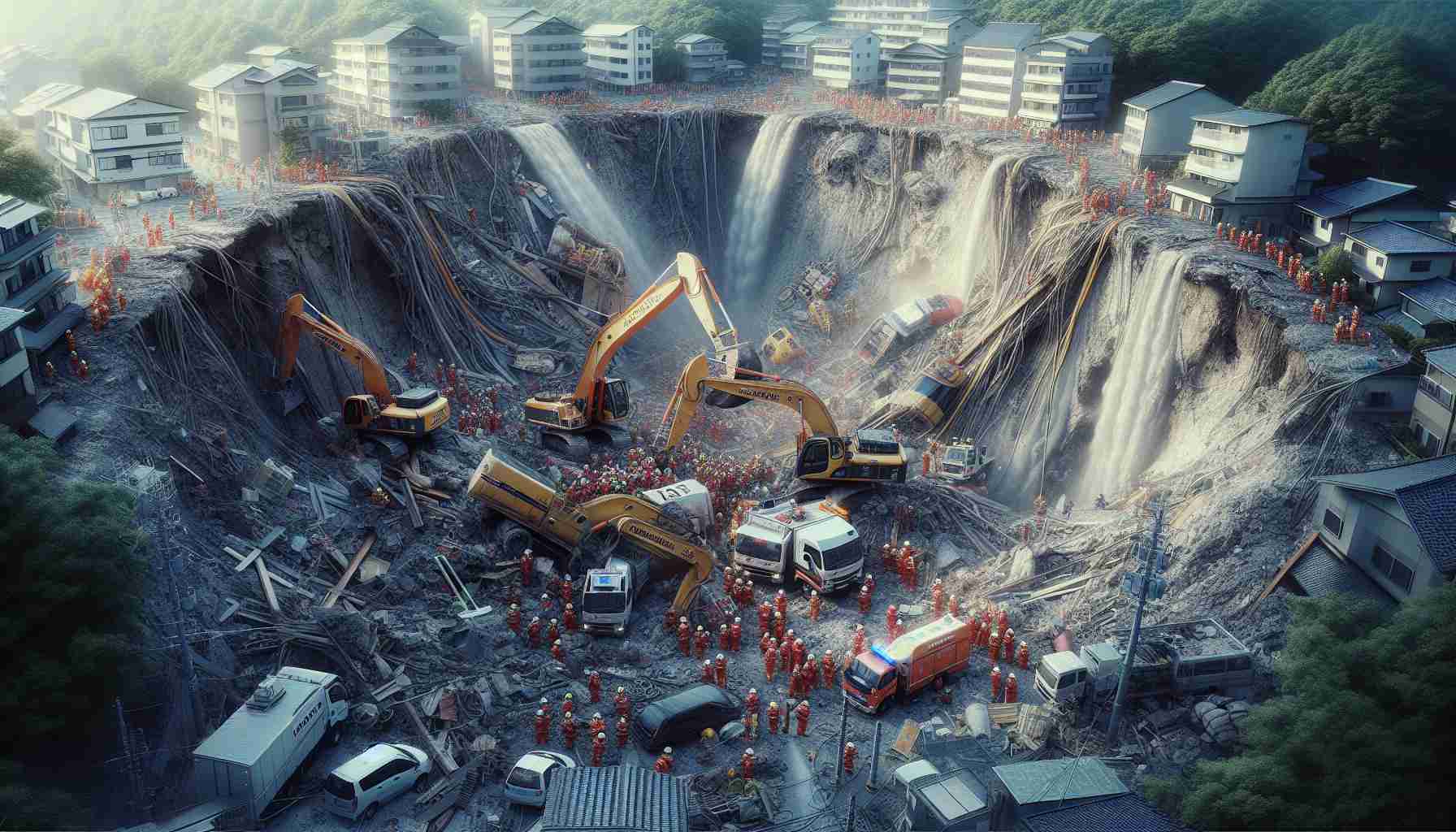- A rescue operation in Saitama Prefecture revealed avoidable decisions that ignored basic scientific principles.
- A second sinkhole opened, highlighting the unstable terrain and the need for better risk assessment.
- Rescue efforts were slow due to secondary collapses and unstable ground, increasing public frustration.
- A drone helped locate the truck’s cabin downstream, but fears of further collapses halted searches.
- Experts criticized the failure to deploy helicopter teams and the lack of a swift military response.
- The incident underscores the importance of robust emergency strategies and quick, informed decision-making by authorities.
- The event serves as a reminder to government officials of their responsibility to ensure public safety.
https://youtube.com/watch?v=f3dto-KACVg
In a dramatic turn of events in Saitama Prefecture, a rescue operation at a sinkhole site exposed a series of disastrous decisions that could have been avoided with basic scientific understanding. A colossal truck perched precariously on soft ground was hoisted just moments before a nearby second chasm swallowed the earth beneath it.
The scene unfolded like a chapter from a thriller. Crumbling soil couldn’t bear the weight, creating a glaring disaster waiting to happen. It was no surprise when the ground gave way again, echoing the elementary principles of physics that seemed to be ignored.
As days dragged on, the clock ticked ominously for rescuers who were stymied by the unstable terrain. Despite these challenges, progress was painstakingly slow, causing frustration to mount. Reports revealed that a drone eventually located what seemed to be the truck’s cabin far downstream in a sewer, but fears of secondary collapses forced a halt to above-ground searches.
Insightful criticism from experts shed light on missed opportunities—specifically, how experienced voices advocated for the deployment of helicopter teams, a call that went unheeded amidst bureaucratic inertia. Fire department officials admitted no helicopter rescue was even considered, further compounding delays.
This incident not only highlights the physical fragility of the area but also the gaps in emergency response strategies. Questions loom over local authorities’ decisions, especially the absence of a swift military deployment request—a contingency plan readily available during disasters.
For government leaders like Saitama’s governor, this event serves as a stark reminder of their critical obligation to safeguard lives with swift, intelligent choices. The public grows weary, demanding accountability and resolution, as the saga of Saitama’s ground collapse turns a critical eye toward future disaster preparedness.
Unveiling the Saitama Disaster: What Went Wrong and How We Can Prevent Future Catastrophes
Understanding the Saitama Sinkhole Incident
The recent sinkhole disaster in Saitama Prefecture serves as an eye-opener on the crucial importance of scientific understanding in disaster management. The striking visuals of a colossal truck teetering on the brink of a second chasm encapsulate how easily such situations can exacerbate if fundamental principles are overlooked.
What Were the Key Failures?
– Neglect of Scientific Basics: The decision to move a heavy vehicle over fragile ground failed to account for basic physics, leading to a predictable collapse.
– Delayed and Inadequate Response: Rescue operations lagged due to bureaucratic inertia, and critical strategies like deploying helicopter teams were ignored.
– Lack of Contingency Planning: Authorities hesitated to request military assistance, a readily available option, delaying effective intervention.
Pros and Cons of Current Emergency Protocols
Pros:
– The availability of advanced tech, like drones, offers new ways to assess danger zones without risking human lives.
Cons:
– Reliance on traditional rescue methods often fails, especially in high-risk areas prone to secondary collapses.
– Bureaucratic red tape can significantly slow response times, jeopardizing lives and worsening outcomes.
Opportunities for Improvement
– Incorporating Scientific Expertise: Deploy experts in geology and physics to guide initial response strategies.
– Streamlining Bureaucracy: Simplify decision-making processes to allow for rapid deployment of resources, including military aid when necessary.
– Technology Integration: Use drones for preliminary assessments and integrate AI to predict structural weaknesses in real-time.
Predicting Future Trends in Disaster Management
In the coming years, the integration of AI and machine learning into disaster response protocols is expected to revolutionize how incidents are managed. These technologies can provide real-time data analysis and predictive insights, ensuring more informed decisions by emergency responders.
Criticisms and Calls for Change
The Saitama event has intensified public scrutiny on local and regional governments. People demand accountability and a revamp of current disaster management protocols to prevent similar tragedies in the future.
What Can Be Done to Mitigate Future Risks?
– Conduct regular drills and training exercises tailored to geologically unstable areas.
– Foster strong collaboration between scientific communities and emergency planners.
– Develop comprehensive risk maps using geospatial technology to better prepare for natural contingencies.
Related Resources for Further Information
Conclusion
The sinkhole disaster in Saitama underscores the importance of marrying scientific insight with practical disaster management strategies. As we look toward the future, embracing technological advancements and committing to a culture of preparedness will be key in safeguarding communities against natural and man-made threats.
